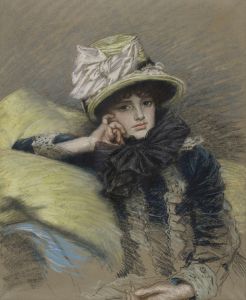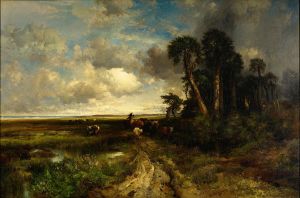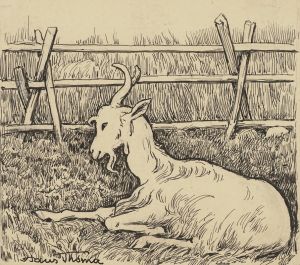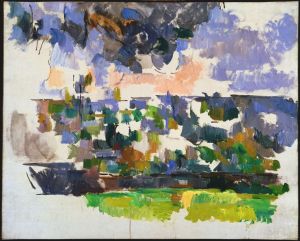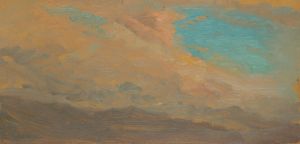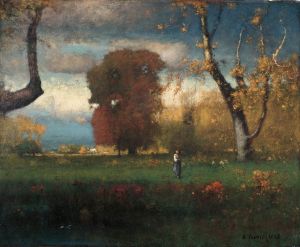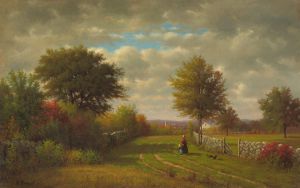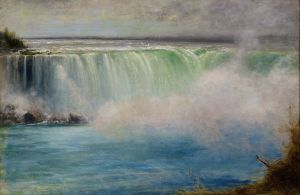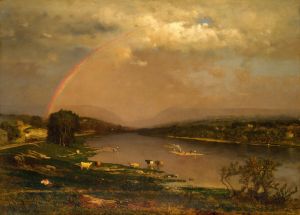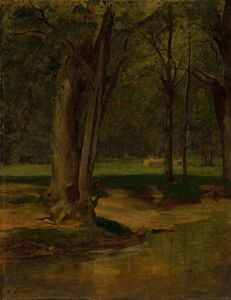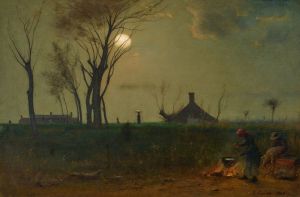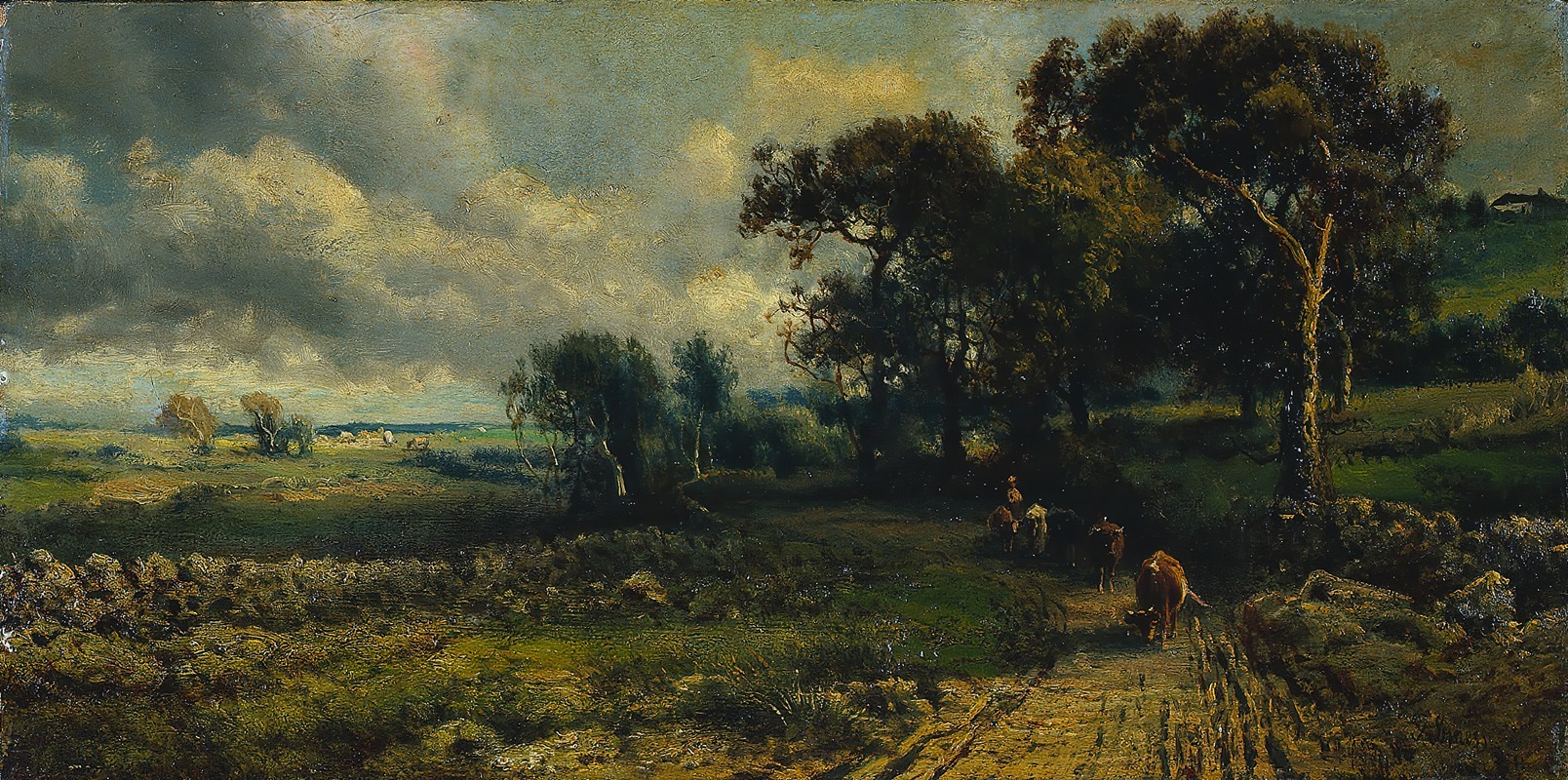
Fleecy Clouds
A hand-painted replica of George Inness’s masterpiece Fleecy Clouds, meticulously crafted by professional artists to capture the true essence of the original. Each piece is created with museum-quality canvas and rare mineral pigments, carefully painted by experienced artists with delicate brushstrokes and rich, layered colors to perfectly recreate the texture of the original artwork. Unlike machine-printed reproductions, this hand-painted version brings the painting to life, infused with the artist’s emotions and skill in every stroke. Whether for personal collection or home decoration, it instantly elevates the artistic atmosphere of any space.
"Fleecy Clouds" is a painting by the American artist George Inness, who is widely regarded as one of the most influential landscape painters of the 19th century. Born on May 1, 1825, in Newburgh, New York, Inness is often associated with the Hudson River School, although his work evolved significantly over his career, incorporating elements of the Barbizon school and later, tonalism.
"Fleecy Clouds" exemplifies Inness's mature style, which is characterized by a focus on atmospheric effects and a more intimate, poetic approach to landscape painting. The painting captures a serene, pastoral scene, with a particular emphasis on the sky and the formation of clouds, which are rendered with a soft, almost ethereal quality. This focus on the sky and clouds is a hallmark of Inness's work, reflecting his interest in the transient effects of light and atmosphere.
Inness's technique in "Fleecy Clouds" involves the use of a muted color palette and loose brushwork, which together create a sense of harmony and tranquility. The composition is carefully balanced, with the horizon line placed relatively low, allowing the expansive sky to dominate the scene. The clouds themselves are depicted with a delicate touch, their fluffy, fleecy forms contrasting gently with the more solid, earthy tones of the landscape below.
Throughout his career, Inness was deeply influenced by the philosophical and spiritual ideas of Emanuel Swedenborg, a Swedish scientist, philosopher, and theologian. Swedenborg's writings on the interconnectedness of the natural and spiritual worlds resonated with Inness, who sought to convey a sense of the divine in his depictions of nature. This spiritual dimension is evident in "Fleecy Clouds," where the serene, almost otherworldly quality of the scene invites contemplation and a sense of peace.
Inness's work, including "Fleecy Clouds," played a significant role in the development of American landscape painting. His emphasis on mood and atmosphere, rather than on the precise, detailed representation of nature, marked a departure from the more literal approach of the Hudson River School. This shift towards a more subjective, expressive style influenced subsequent generations of American artists and helped to pave the way for modernist movements in the 20th century.
"Fleecy Clouds" is held in high regard within Inness's oeuvre and is representative of his ability to capture the subtle, fleeting beauty of the natural world. The painting continues to be admired for its technical mastery and its evocative, contemplative quality. Today, George Inness is celebrated as one of America's greatest landscape painters, and his works, including "Fleecy Clouds," are featured in major museums and collections across the United States.
In summary, "Fleecy Clouds" by George Inness is a notable example of the artist's mature style, characterized by its focus on atmospheric effects and a spiritual approach to landscape painting. The painting's serene, harmonious composition and delicate rendering of clouds reflect Inness's deep appreciation for the natural world and his desire to convey a sense of the divine through his art.






